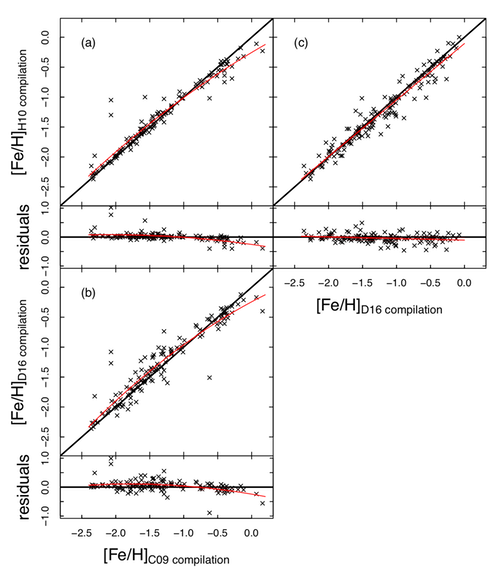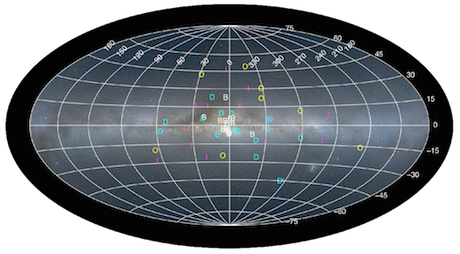 |
Average metallicities from different homogeneous
studies as done by Harris (1996, 2010 edition;
H10), Carretta et al. (2009; C09), and by us (Dias et al. 2016; D16). |
(a) C09 vs. H10: H10 adopted the C09 scale for 95 clusters and gave a triple weight to
these metallicities to take the average with other sources. Therefore in the range
[Fe/H] < -1.0 the values averaged by H10 using spectroscopic and photometric indicators
are in good agreement with the average taken by C09. For clusters more metal-rich than
that, C09 present higher values than those of H10. In fact, Carretta et al. said in
their source paper that "problems might arise at the high metallicity extreme" because they
did not observe clusters with [Fe/H] > -0.4.
(b) C09 vs. D16: our metallicity scale is based on the homogeneous set of [Fe/H] of 51
globular clusters covering the full range of metallicities -2.4 < [Fe/H] < 0.0. Therefore
our average (D16) of previous homogeneous metallicities in our scale is valid for the full
range of metallicities. Consistently to what we found in Dias et al. (2016), C09
present higher metallicities for clusters with [Fe/H] > -0.4.
(c) D16 vs. H10: finally, our compilation of metallicities naturally agrees with the
averages adopted by H10 for the full range of metallicities. We also have included newer
references with respect to C09 and increased the number of clusters with homogeneous
metallicities from 95 to 124. We call the attention that H10 took an average of different
sources, including photometric metallicities in some cases, and our scale agrees well with
this average. It seems that we are converging to a complete homogeneous scale of globular
cluster metallicities!
|

